| Don't like ads? | No ads |
*Bourbon Culture is reader-supported. When you buy through links on our site, we may earn an affiliate commission.
Distilleries have often experimented with different ways to make their whiskey in order to refine their processes or to find a new product that consumers would want. Few of those distilleries actually sell the results of those experiments under their own name, most are just disposed of or sold off to barrel brokers. Cascade Hollow occasionally sells unique mash bill bourbons to barrel brokers with the stipulation that they don’t want anyone to know they made it. I also believe Barton sells various mash bills of their whiskey to different NDPs while keeping secret that it came from them. On the flipside, you have companies like Buffalo Trace who bottle and sell a whole line of whiskey that came specifically from their experimental program. They aptly call this the “Buffalo Trace Experimental Collection” (or BTEC for short).
Maker’s Mark DNA Series
Our story with Maker’s Mark DNA Project actually starts with the BTEC. Back in mid 2013, a batch of new releases came out that showed Buffalo Trace had been tinkering with the barrel entry proof of their wheated bourbon recipe. As our knowledge of whiskey grows, we begin to find out that the flavor and richness of our whiskey can change through things like the proof point that distillate gets put into the barrel at. By law, bourbon can’t come off the still at more than 160 proof and it can’t go into the barrel at more than 125 proof. Most distilleries have a distilling proof somewhere between 130 and 140. Barrel Entry Proofs tend to vary from as low as 100 all the way up to 125. Buffalo Trace had been distilling their wheated bourbon to 130 proof and barreling it at 114 proof for a while up until that point but wanted to see what would happen if it was put into the barrel at different points.
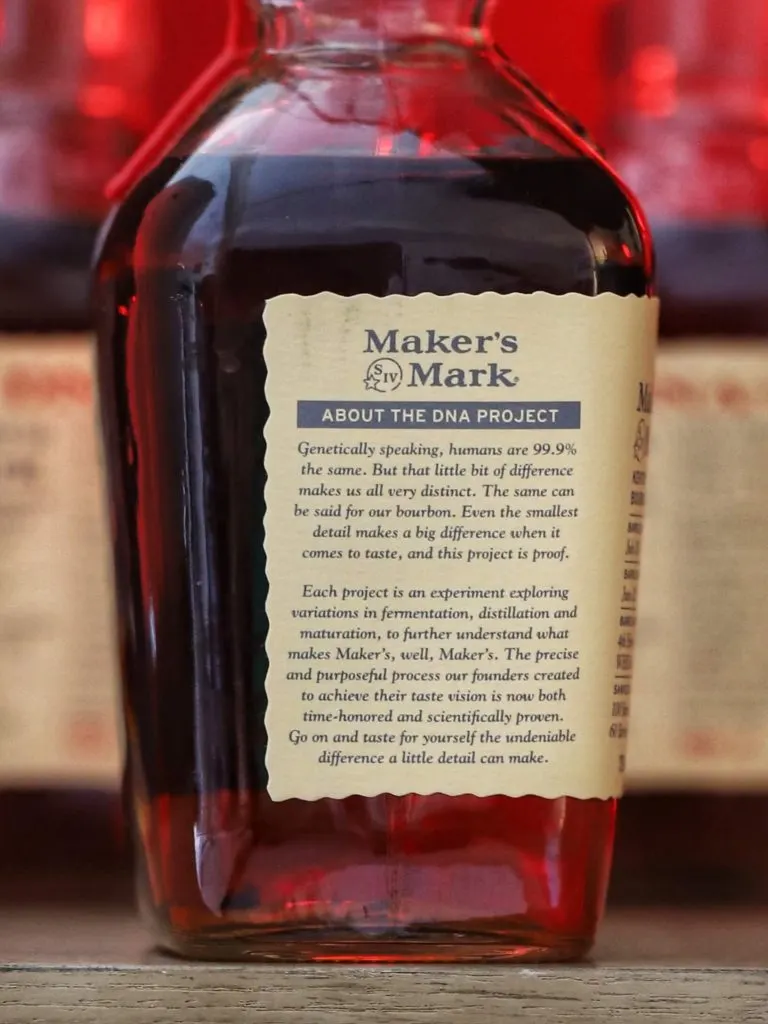
For wheated bourbon, using a low barrel entry proof point is practically gospel among the master distillers. Pappy Van Winkle famously kept his distillate low at every step of the process from low initial distillation proofs to low doubler proofs to low barrel entry proofs. This resulted in a very rich whiskey but one that cost a lot of money to make due to the fact that more grain was being used and less yield could be realized per barrel. As the years went by almost every distillery raised their barrel entry proofs to make more money.
Buffalo Trace wanted to see if a lower proof resulted in a bourbon that had similar profiles to the classic whiskies of yesteryear. Additionally they wanted to see if the maximum barrel entry proof would result in a wheated bourbon that was obviously worse than its lower-proofed brethren. To test this, Buffalo Trace barreled 4 batches of bourbon with barrel entry proofs of 90, 105, 115 and 125. Keep in mind that the 115 entry proof point was only one proof point away from being what BT used for barreling Weller and Van Winkle products. In scientific terms, it was probably put there as the experiment’s “control.” All barrels were aged on the same floor of the same warehouse for a little over 11.5 years. Then they were dumped, proofed down to 90 and chill filtered before being bottled. I’d also like to add in that I just can’t understand why Buffalo Trace insists on bottling all of their BTEC releases at 90 proof and using chill filtration. So stupid.
The results of the test revealed some interesting conclusions. For example, the evaporation percentages indicated that the lower the barrel entry proof, the lower the rate of overall evaporation to the liquid inside the barrel. This is fascinating because if this holds true across the board, maybe the whole thing with accountants saying that they’ll get more yield per barrel if they barrel it at a higher proof point is not technically true all the time. A lower barrel entry proof whiskey that was designated to be bottled at “barrel proof” at the beginning of aging would theoretically yield more bottles at the end of aging than a higher proof.
Secondly, they found that the 90 proof BEP had much more oak notes than they expected while the 105 had a superior balance. 115 was found to be too dry while 125 seemed to have great flavors despite going against decades of wisdom that said differently.
Those 4 batches of BTEC were dumped and bottled in June of 2013. So tell me if it sounds a little bit suspicious that Maker’s Mark decided to basically replicate this exact same experiment one month later (July, 2013) when they filled up 100 barrels with different proofs and designated them for this project. Maybe they were following the old saying of “Imitation is the sincerest form of flattery.” As an aside, I also was told a rumor that it was the corporate executives at Beam-Suntory that told Maker’s Mark to change their barrel entry proof to 125 to increase profits. Maker’s did this experiment to show them that doing that would create an inferior product. After a little research, I’m not sure that holds water because Beam wasn’t purchased by Suntory until January 2014, a full 6 months after Maker’s Mark initiated this experiment.
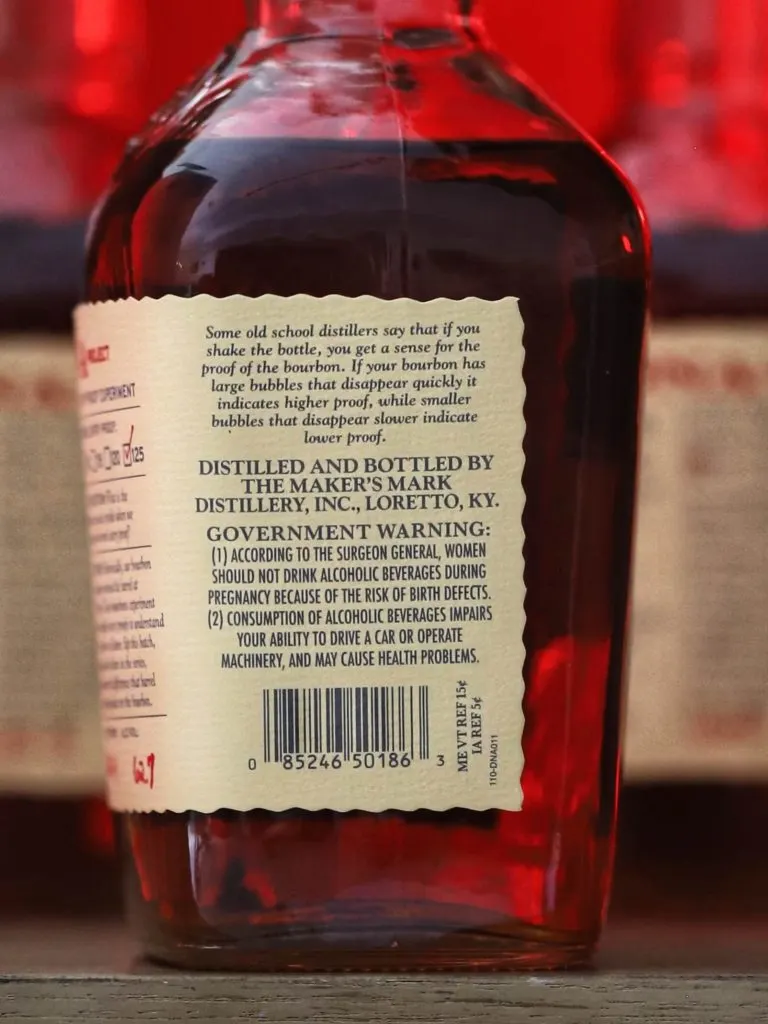
What’s even more shocking is that somebody at Maker’s Mark actually green-lighted an experiment like this. For years, Maker’s Mark had preached consistency of their product. They only made one mash bill and they only did it one way. They never aged any barrels past 8 years (these days a typical barrel is aged 4 to 7 years) and they always rotated them so that every barrel and every batch would taste as similar as possible. But this new project was going to be different. Not only would the barrels rest in the same spot in the same rickhouse the entire time, but they also would carry an age statement when they were dumped. And for some strange reason, they elected to pull the barrels one month shy of turning 8 years old. It’s like a vindictive bean counter at Beam-Suntory was unhappy that this experiment happened and wanted to suck as much fun out of it as they could.
Maker’s went with the barrel entry proofs of 110, 115, 120 and 125 to experiment with. 110 is their standard barrel entry proof point but don’t confuse it with being just like their standard Cask Strength release. The difference is that all Maker’s Mark Cask Strength bottles come from giant batches that seem to always keep the proof somewhere between 107 and 111 proof. The 110 proof DNA Project batch rolled out at 116 proof, which would make it the strongest proof Maker’s Mark had ever released if you don’t count the other 3 batches from the DNA Project. Out of the 100 barrels that were put into this program, more than half ended up in the 2022 DNA Project. You heard that right, not all the barrels were used. Could we see a future DNA Project v2.0 release from Maker’s?
Cutting to the chase, I’ll share the basic synopsis of what Maker’s Mark said about this project when it was finished. It basically boiled down to “The results of the experiment validates our decision to barrel our bourbon at 110 proof.” And that was it! No further discussion took place. But come on now, it can’t be as simple as “110 BEP is the best so don’t get your hopes up,” right? That’s where I come in. I’ve been sampling from these bottles multiple times as well as sampling them out (Blind) to various friends to get their opinions too. In the summary, I will also throw in the gist of what they thought. But for the time being, let’s see just how different these bottles are. I sampled each one neat in a glencairn.
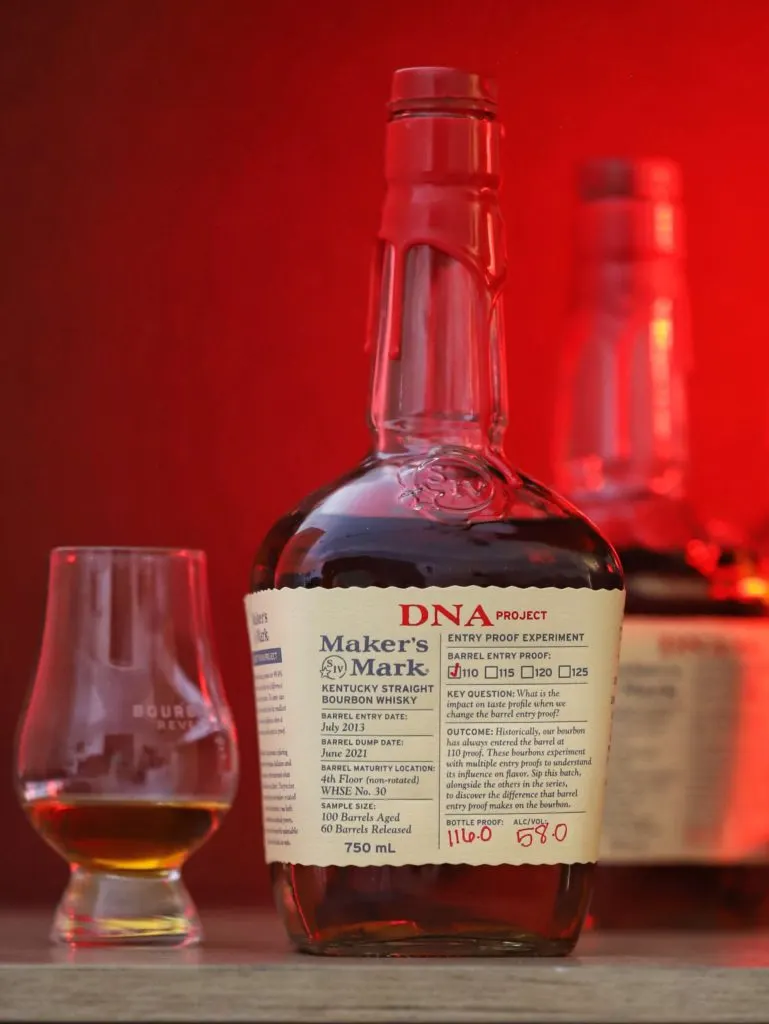
Barrel Entry Proof: 110
Nose: This pour has the perfect amount of caramel sweetness on the nose coupled with a nice amount of oak and jammy dark fruit scents. There is lots of cinnamon spice to be found as well as notes of chocolate cake.
Palate: A surprising amount of spice explodes on the tongue with heat that I haven’t experienced in a Maker’s product before. Sweet and oily with a lovely blossom of candied fruit (orange being the most dominant) on the tongue followed by oak spice and a touch of new leather. Cinnamon spice and chili powder make an appearance to let your tongue know about all 116 proof points. Overall this has a well-rounded mouthfeel that feels polished to perfection. I would’ve guessed this was closer to 10 years old rather than 8. It does taste hotter than I expected though.
Finish: Cinnamon Red Hots combine with wood furniture polish, cherries and chocolate cake to create a classic spicy wheated bourbon finish. The spicy heat I found on the palate continues to smolder for a very long time but the other flavors prevent it from ruining the finish which makes this finish a really exceptional one to linger on.
Score: 8.3/10
Final Thoughts: The 110 proof version of Maker’s delivers a punch to my tastebuds with this sweet, surprisingly oaky spice-bomb. You can tell at its roots that it’s Maker’s Mark Cask Strength turned up a few extra decibels. What really caught me off-guard was how noticeable the proof was. It made it a very bold and enjoyable dram!
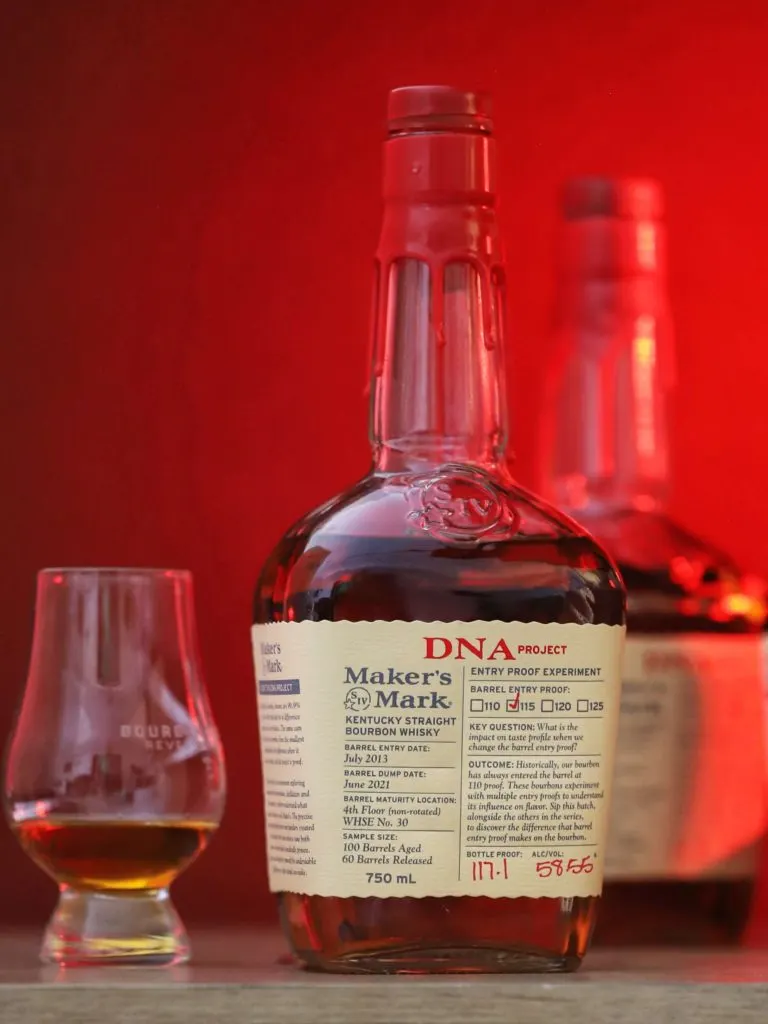
Barrel Entry Proof: 115
Nose: The caramel on the nose seems even lighter than the sweetness I found on the 110 proof. As for the chocolate, it leans more towards milk chocolate than the dark, rich chocolate of the previous bottle. The dominant scent is that of unbaked cinnamon roll dough. Equal parts yeasty, buttery and “cinnamon-y” but there is something off about it all that I can’t put my finger on.
Palate: A strange grassiness finds its way to the forefront of my tongue. What the heck? This is a wheated bourbon and yet this notes screams “rye” to me when I first taste it. It’s almost got a herbal character to it. This is hard to see past, but when you do you find some honeyed sweetness with cinnamon and citrus rind. The baked goods here seem underbaked and the spices from the spice rack seem to be overly prickly and hot. This is not good.
Finish: Some oak finds its way through on the finish while peppermint and honey sweetness lingers on. The finish is still dominated by the grassiness that I found on the palate, completely ruining the experience.
Score: 4/10
Final Thoughts: What happened to this one? It’s not even like it was from the same distillery, let alone the same batch of barrels. Across the board, friends of mine identified this one as the worst one of the batch and in some cases, thought this was a rye whiskey when they tried it blind.
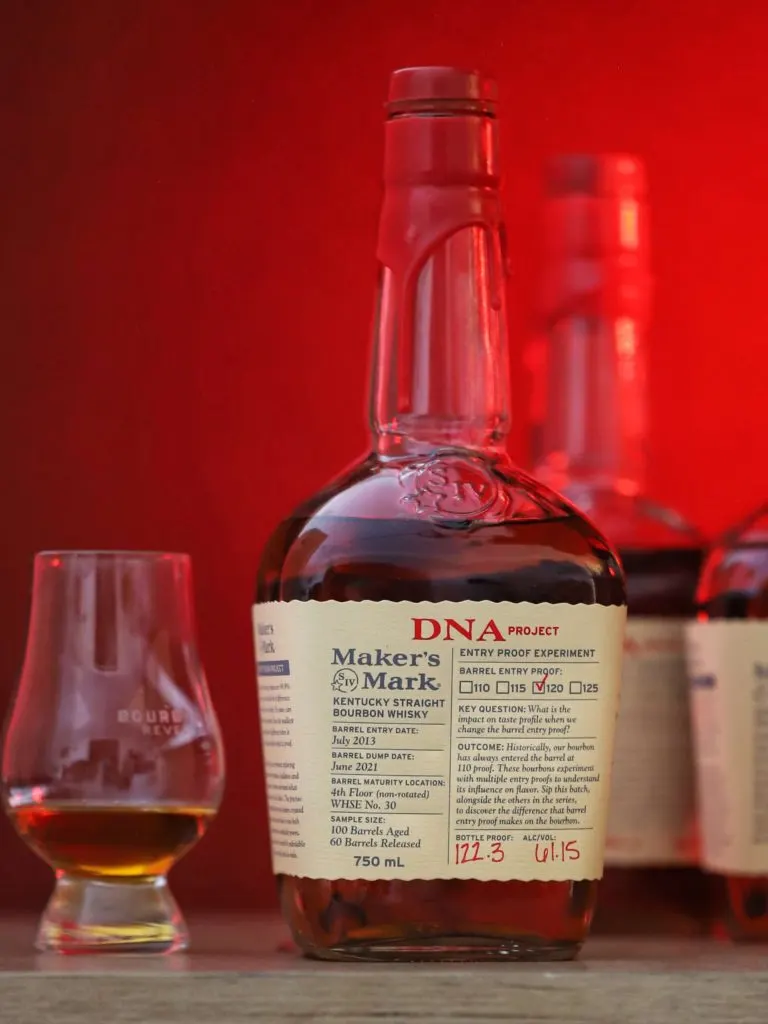
Barrel Entry Proof: 120
Nose: The nose gets back on track to the general theme of the DNA Project. Gone are the grassy notes of the 115 proof. Instead, candied fruit and the scent of butterscotch pudding packs can be found. The heat becomes increasingly noticeable and cinnamon spice and oak spice begin to have more of an impact. Will this one have as much heat control as the 110 proof had?
Palate: Coming in at 122.3 proof, this bottle shows off its immense (for Maker’s) ABV with dominating notes of sharp cinnamon, ground cloves and tongue-punching chili oil. The sweetness is just barely left intact so as to not let the heat rum rampant. Notes of creme brulee and butterscotch candies take over. There is even a good amount of chocolate to find here. Oak spice contributes to the overall heat found in each sip. This is fun to drink but I’m starting to realize there’s a trend that all of these Maker’s are drinking much hotter than their high proofs would indicate.
Finish: A decently hot feeling in my mouth remains after the sip is complete, but the sweetness and spice lingers on for a while. There’s even some oak and shoe leather to take in. 60% Cacao Dark Chocolate with a layer of sea salt caramel makes this the best integrated chocolate notes of the bunch. The finish is overall very nice and seems to be balanced regardless of the heat I found on the palate.
Score: 8.1/10
Final Thoughts: This is a rich and flavorful version of Maker’s Mark that has a ton of spice and heat that may be a little overwhelming for a new drinker. If you like spice though, this one has it in droves. I like it because it is bold and unforgiving though. What will the 125 proof pack?
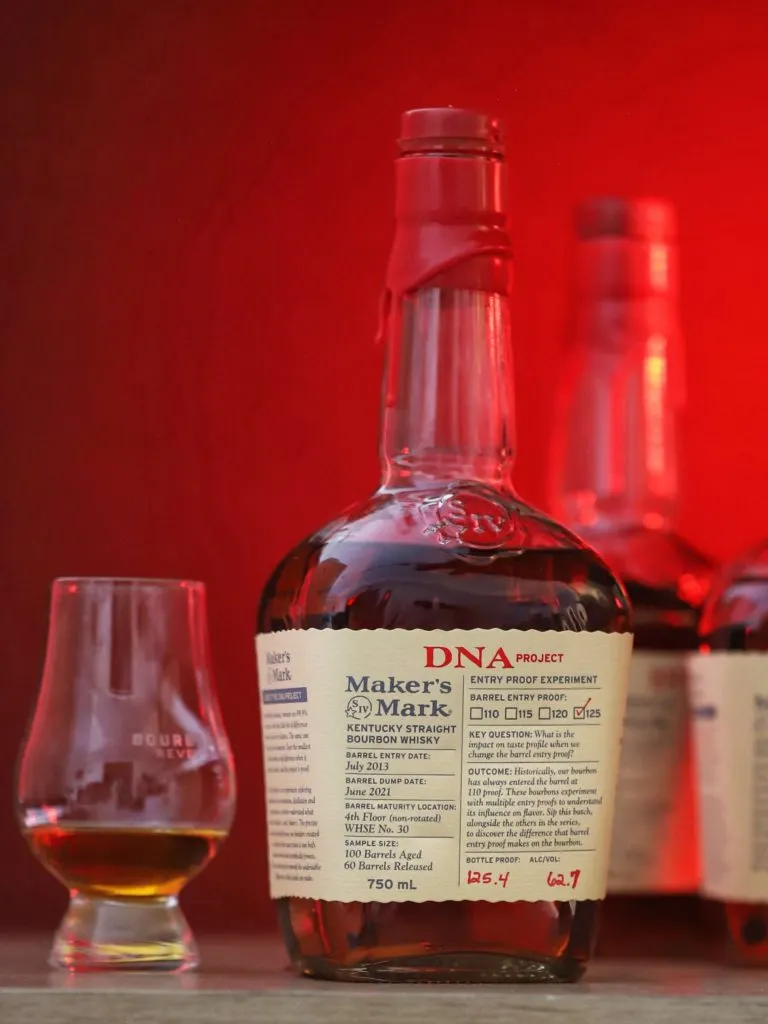
Barrel Entry Proof: 125
Nose: The barrel influence seems to be totally different on this one compared to the others. You can smell the depth of the oak and the barrel char. At certain points, it’s almost like it has a “smokiness” to it. Toasted wood follows with vanilla beans, cherry jelly and cinnamon. The note is potent, but it’s almost a little bit more toned down in the spice department compared to the 120 proof due to the extra woodiness found here.
Palate: Robust and oak-driven. The spices (cinnamon, peppercorn, allspice) dominate over the sweetness here reminding me of a powerful Stagg Jr batch. Semi-burnt caramel, vanilla, oak spice and overdone brownies. The palate seems slightly unbalanced but if you can hang on long enough, the ride will be worth it. This version of the DNA Project has the most depth of any of the previous barrel entry proofs. It’s interesting what the extra wood found in each sip does to the overall profile of Maker’s Mark. This leans more towards WLW levels of wood and flavor.
Finish: Vanilla-forward with loads of oak spice. Dessert heavy with notes of brownies, custard and tiramisu. Tobacco and leather add a depth of tannins that you just don’t find in standard MM releases. What an awesome finish to behold.
Score: 8.4/10
Final Thoughts: This is a brash, bold flavor bomb that toes the line of being unbalanced. The tannins are unlike anything you’ve ever had in an MM product and the proof will remind you of a Stagg Jr batch. My overall feeling for each of these bottles was that they tasted far spicier and hotter in proof than their numbers indicated. Easily 5 to 10 proof points higher than the label said. The 125 wins as my favorite due to the extreme nature of the flavors that separate it from all other MM releases. We need to see more products like this.
Overall Scores:
1st Place: Maker’s Mark DNA Project 125 proof
2nd Place: Maker’s Mark DNA Project 110 proof
3rd Place: Maker’s Mark DNA Project 120 proof
4th Place: Maker’s Mark DNA Project 115 proof
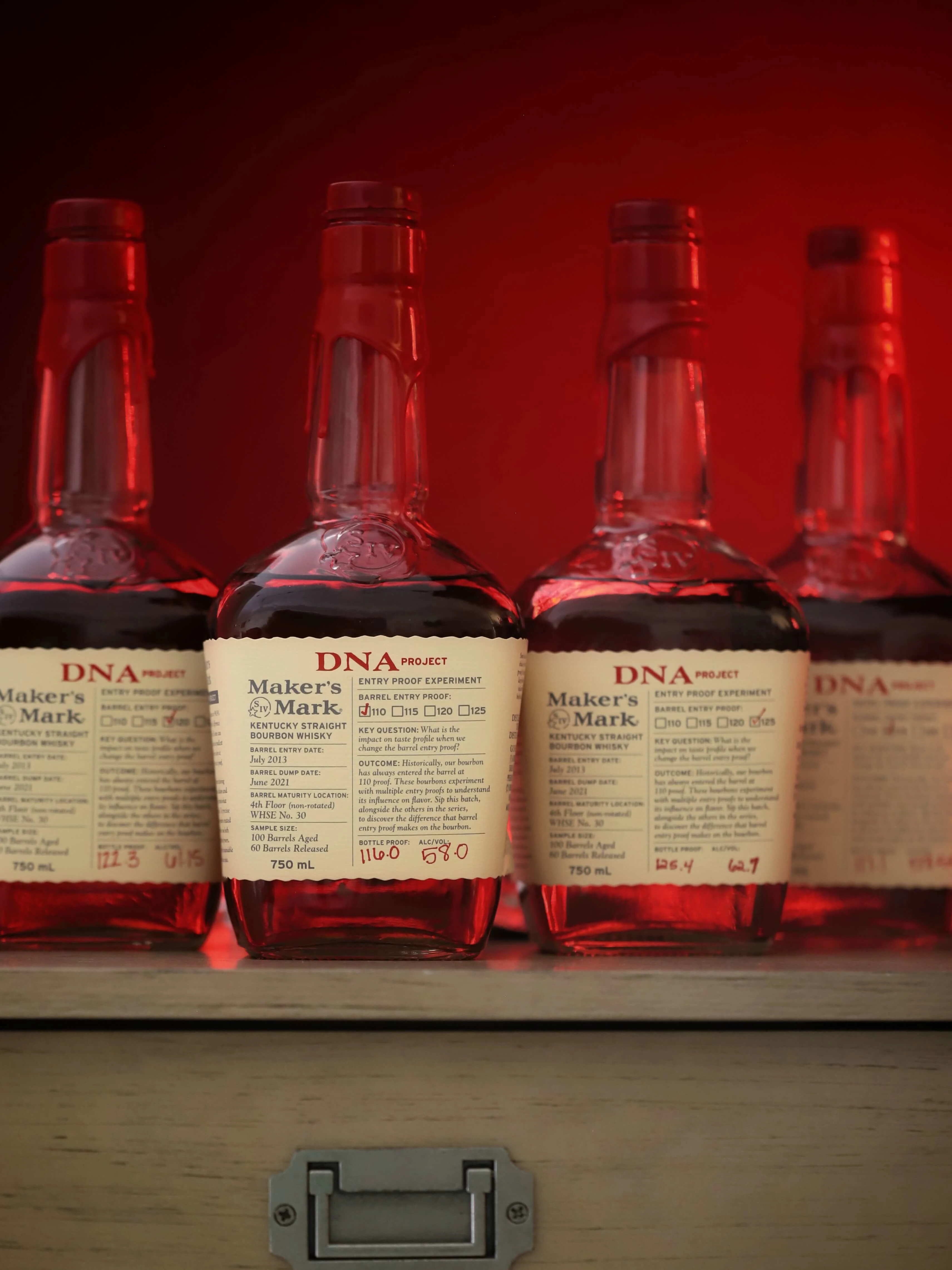
In some regards, I could’ve easily chosen the 110 proof version of the DNA Project as the winner among the four bottles. If you want everything that people love about Maker’s with those notes amplified to even greater heights, this is the one you should seek out. But I’m not a guy that wanted “Maker’s Mark+” when I bought these bottles. I was after something that would change my whole worldview of what would happen if Maker’s Mark started going to the gym, bought a sports car and started wearing sexy clothes. That’s why the 125 proof version was chosen as my favorite.
What was most surprising to me was how spice-forward all of these Maker’s tasted when left at barrel proof and not blended in with lower-proofed barrels. The sweet, pleasant version of Maker’s Mark Cask Strength is like an afterthought compared to every bottle here. It goes to show: A.) how much rotating the barrels must control the heat realized in each barrel and B.) how much batching each product is done carefully to ensure the true spicy nature of Maker’s Mark distillate doesn’t scare away the general public. The flavor rises exponentially and is practically begging for more time in the barrel. Maker’s Mark claims (on their guided tours) that no barrels are aged past 7 or 8 years old because they become too over-oaked. I don’t buy this after tasting how much better and more interesting the 125 proof version tasted with all of that extra oak. I can only imagine what 10 to 12 years would do to a barrel of Maker’s. We’re talking WLW challenger.
Polling my friends on which DNA Batch they liked
A quick synopsis of what my friends have said after tasting each one of these. First off, it’s almost universal across the board that they’ve rated the 115 proof as the worst of the bunch. One of the only compliments that it received seemed to be about the nose being pretty good. Most friends preferred either the 125 or 110 proof. The rate for each was split down the middle and probably comes down to what style of bourbon they enjoy more in real life. Don’t count out the 120 proof though as there was a tasting night where my neighbor and I both picked it as the winner in a blind lineup. This was the only time I picked it first though, but it’s by no means a slouch.
So what does this project show? It shows just how different we all are when it comes to preferences of what we want in a bourbon. If you like spicier, woodier bourbon, you will lean towards the 120 or 125 proof. If you enjoy the sweetness of regular Maker’s, but amplified, go for the 110. It also shows that the 125 proof version won’t necessarily make a trash wheated bourbon like Heaven Hill’s. Regarding HH, maybe their wheated bourbon is so awful because of their yeast or high distillation proof (140).
I truly hope that we get to see a second release of the remaining barrels that were not used in this initial release in the next few years. I think it would be amazing to finally be able to judge, once and for all, if there is such a thing as too much oak in a Maker’s Mark product. Until then, write to your local congressman (or congresswoman) and tell them that your vote depends on whether or not they can get Maker’s Mark to stop rotating their barrels and to start aging them longer. We the people demand more flavor!
Featured Products
- Neat Traveler

- View Larger
- Description:The Aged & Ore Neat Traveler is a complete travel kit for spirits. We combined our widely praised Neat Glass with one of our 3oz Flight Bottles and housed them together in a custom EVA travel case. Perfect for a night away with your favorite pour. The tie
- Bottle Flight

- View Larger
- Description:The Aged & Ore Bottle Flight is a premium set of 4 custom silicone wrapped glass bottles designed to transport and share samples of your favorite spirits. The flight bottles come in a custom EVA travel case that fits perfectly in any small bag. An Aged &
- Travel Bundle
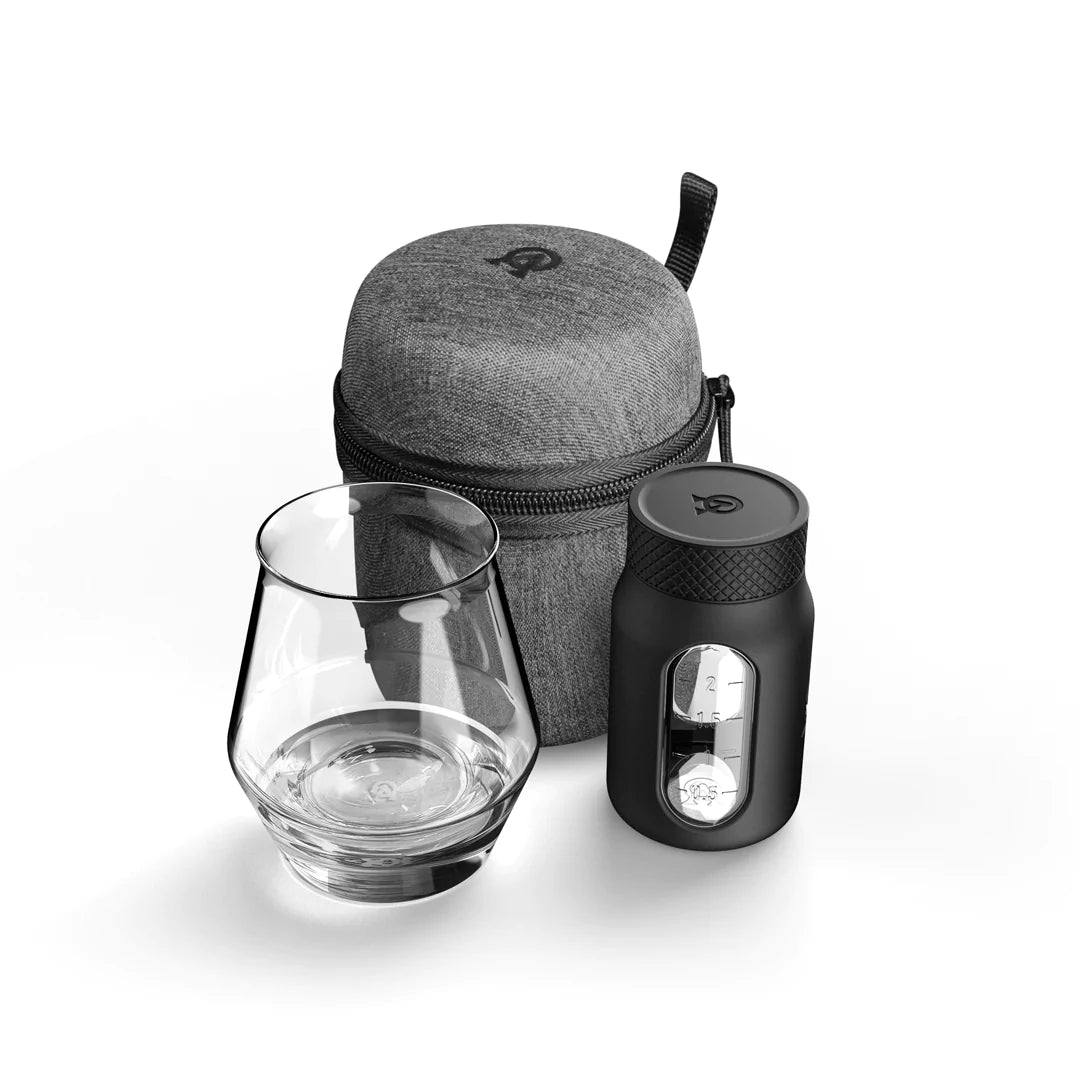
- View Larger
- Description:This Bundle combines two of our crowd favorite products, creating the ultimate travel bundle to bring along your favorite spirits and glassware. Bundle Includes: Neat Traveler (Gray) Bottle Flight (Gray) Note: This bundle is only available in gray and col
*Bourbon Culture is reader-supported. When you buy through links on our site, we may earn an affiliate commission.
